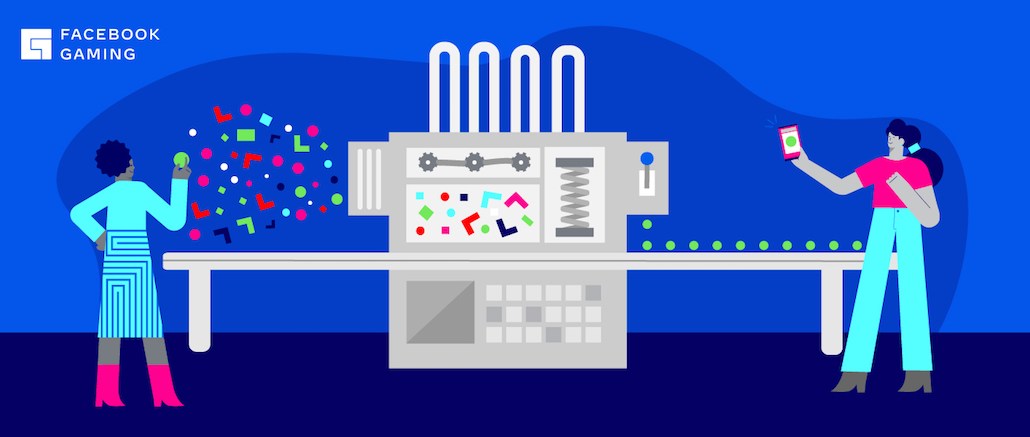
Ben Webley, Director of Gaming, Americas at Facebook
Achieving top performance when engaging app audiences often requires marketers to monitor, tweak manually and hone each campaign element. Meanwhile, running multiple campaigns with many different creative variations across many platforms — and trying to do so at scale — can be a massive headache.
These are particularly pressing questions for gaming developers and publishers — and also the brands that advertise in those environments, even if they’re not in the gaming space themselves. Given that gaming is the largest app category by an overwhelming margin — and it’s a mainstream form of entertainment globally — advertisers looking to target app audiences are learning and applying the lessons of automation across a wide spectrum of their efforts.
For marketers and media specialists looking to improve and scale performance across games and other apps, the prospect of turning to artificial intelligence solutions can seem daunting. But many practitioners are now finding AI tools to be an efficient approach to streamlining time-consuming tasks while unlocking new growth potential.
Machine learning assists app ad campaigns at scale
Machine learning has the capacity to illuminate human behaviors and patterns on an incredible scale. It applies sophisticated computer systems and AI to real-time problems by processing countless data points to predict who will respond to an ad. It then passes this information to an automated system that places ads in the most effective places at the optimal times.
Automated campaigns help gaming developers, in particular, and publishers of all sizes to optimize app ad campaigns and scale efficiently. They can set an optimization goal toward which delivery systems can steer, while machine learning predicts the most valuable opportunities based on incoming data. These steps allow marketers to make adjustments that drive campaign performance. It’s incredibly efficient, leaving more time for other tasks.
Identify high-performing creative with machine learning
Creative is a crucial part of any campaign. But it has become increasingly difficult to pin down which ads are best served to which audience. The variables are always increasing. People are not only spending more time on their phones, but they’re also using their phones to do more things. As a result, people are regularly introduced to more channels, formats and data in the media landscape, creating even more complexity for marketers.
Machine learning can automate the testing of creatives to these diverse audiences, helping to determine which combination of creatives and messages will yield the best results. Marketers can then see what’s working and what isn’t, and identify how they can refine their campaign creative.
Achieving greater liquidity for marketers
For marketers, liquidity is a condition in which every dollar can flow to the most valuable impression, wherever it may be. The more liquid the campaign, the fewer the constraints. Machine learning boosts liquidity, and along with identifying the best-performing creative, the system will actually place the best-matched creative in the right place at the right time. This removes much of the guesswork from media buying, as the automated system adjusts placements in real time.
Automation is unlocking campaign opportunities
As an example of how machine learning drives the above outcomes, gaming developers and publishers of all sizes have already seen positive results by running campaigns with Facebook’s Automated App Ads solution, favoring automation over manual adjustments.
In early tests, Etermax drove the volume of installs and value of lower funnel events for Trivia Crack 2, one of the developer’s biggest games. Nahir Garcia, the company’s head of user acquisition, reported 150,000 incremental installs — a 22 percent higher return on investment and a 20 percent higher lifetime value on average.
Mobile gaming studio Ilyon also saw 150 percent more installs and a 29 percent higher return on ad spend for the game Cube Rush Adventure. Reut Leibel, user acquisition manager, noted that the automation of creative testing enabled the studio to sustain performance throughout the entire campaign.
These are just a few of the many ways machine learning and automation can improve campaign performance and make life easier for marketers. Machine learning and AI have helped marketers reach app audiences across different industries to achieve success with automation and streamline how they run their campaigns.
None of this is to say that automation will replace human marketers. AI simply opens up more opportunities and leaves more time to focus on other tasks. It still falls to marketers to choose the campaign goals — the signals for the AI to follow and work towards, from sales to downloads to conversions. Human instinct and a creative mind will continue to be critical for a successful campaign.
More from Digiday

Media buyers shift spend from The Trade Desk’s OpenPath over transparency concerns
OpenPath offers buyers a “cleaner” route to publishers, but some are concerned about lack of clarity over indirect costs.

How the MAHA movement influenced food and beverage brands in 2025
The MAHA movement has come to stand for different things in different people’s eyes, depending on which initiatives they most closely follow.

Why Georgia-Pacific is turning its programmatic scrutinty to the sell side
The company is turning its attention to the sell side, zeroing in on the ad tech firms that move inventory for publishers — the supply-side platforms.





